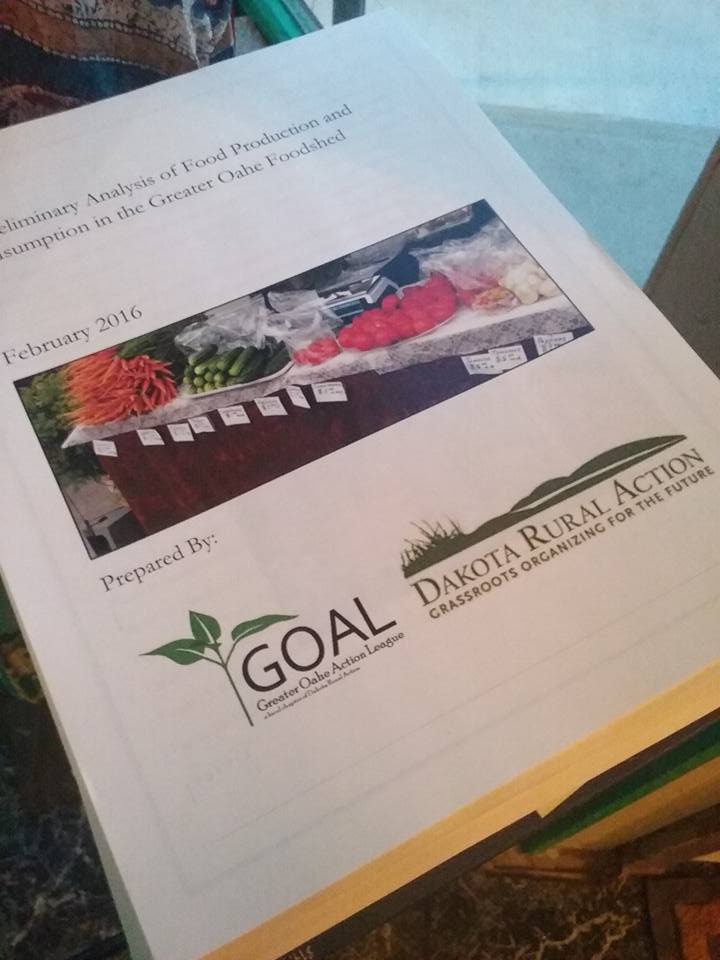On Feb. 19, the Greater Oahe Action League (GOAL), a local chapter of Dakota Rural Action, released the results of an eight-month-long study of the region’s foodshed to determine how to better connect local farmers with consumers.
Foodshed report
The report, A Preliminary Analysis of Food Production and Consumption in the Greater Oahe Foodshed (PDF), provides baseline data on food production and consumption in the Central South Dakota region.
A “foodshed” is the area that includes where a food is produced, where it is transported, and where a food is consumed. It includes the land it grows on, the routes it travels, the markets it goes through, and the tables it ends up gracing.
The driving force behind the study was to help members find ways to support the local economy through greater access to local food for consumers, and greater access to local markets for producers.
GOAL members conducted interviews with producers and consumers. They also used data from the 2012 Census of Agriculture, the Bureau of Labor Statistics, and the Bureau of Economic Analysis to examine agricultural production and consumer spending on food within a 50-mile radius of Pierre.
Report Findings
Producers surveyed noted a variety of challenges getting their products to market.
Some of the challenges [facing producers] include inconsistency of market attendance, being at mercy of the weather, being left with produce that doesn’t sell during peak season, and pricing of goods compared to what people want to pay. There are also overhead costs of licensing and labeling, hired help (if one can find), transportation, and liability insurance.
Producers also said consumers need to be educated about the value of locally-grown food.
The report found that consumers in the Greater Oahe foodshed – a ten county region with about 40,000 residents – will spend an estimated $64 million on food eaten at home. Though consumers surveyed want local food, they said they have trouble finding and affording it.
For consumers, there seems to be a clear desire to have locally-grown food, but the largest barriers are access and cost. Many consumers value quality, convenience and cost, and find accessing local food that meets these values difficult.
The report found that connecting producers and consumers could generate enormous economic opportunity.
If the barriers between local production and local consumption could be lowered, producers may be able to save costs on transportation and storage while consumers could save costs by buying directly from the farm.
GOAL members plan to distribute the report widely across the region. The chapter is planning a series of community meetings to discuss the report. Members aim to identify opportunities for action to support access to and production of local food in the region.
Click here to download the report (PDF).
Contact
For more information about or to join GOAL or the foodshed report, visit GOAL’s website, Like GOAL on Facebook, or contact DRA organizer Sabrina King.

